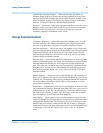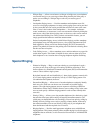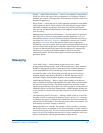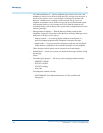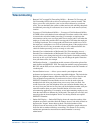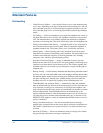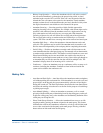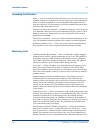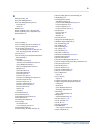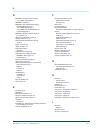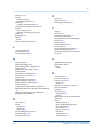
Attendant Features
129
Overview for Avaya IP600 Internet Protocol Communications Server
555-233-001 — Issue 5 — November 2000
C
• Release Loop Operation — Allows the Attendant to hold a call at the console if
the call cannot immediately go through to the person being called. A timed
reminder begins once the call is on hold. If the call is not answered within the
allotted time, the call returns to the queue for the Attendant. Timed reminders
attempt to return the call to the Attendant who previously handled it. Only when
the original Attendant is unavailable are calls returned to the queue.
• Attendant Vectoring — Vectoring provides a highly flexible approach for
managing incoming calls to an attendant. For example, with current night service
operation, calls redirected from the attendant console to a night station can ring
only at that station and will not follow any coverage path. With Attendant
Vectoring, night service calls will follow the coverage path of the night station.
The coverage path could go to another station and eventually to a voice mail
system. The caller can then leave a message that can be retrieved and acted upon.
• Attendant Split Swap — Allows the attendant to alternate between active and
split calls. This operation may be useful if the attendant needs to transfer a call
but first must talk independently with each party before completing the transfer.
• Serial Calling — Enables an Attendant to transfer trunk calls that return to the
same Attendant after the called party hangs up. The returned call can then transfer
to another station within the switch. This feature is useful if trunks are scarce and
Direct Inward Dialing services are unavailable. An outside caller may have to
redial often to get through because trunks are so busy. Once callers get through to
an Attendant they can use the same line into the switch for multiple calls. The
Attendant’s display shows if an incoming call is a serial call.
• Conference — Allows an Attendant to set up a conference call for as many as six
conferees, including the Attendant. Conferences from inside and outside the
system can be added to the conference call.
Making Calls
• Auto Start and Don’t Split — Auto Start allows the Attendant to make a telephone
call without pushing the start button first. If the Attendant is on an active call and
presses digits on the keypad, the system automatically splits the call and begins
dialing the second call. The Don’t Split feature deactivates the Auto Start feature
and allows the sending of touch tones over the line for the purposes of such things
as picking up messages.
• Auto-Manual Splitting — Allows an Attendant to announce a call or consult
privately with the called party without being heard by the calling party on the call.
It splits the calling party away so the Attendant can confidentially determine if the
called party can accept the call.
• Direct Trunk Group Selection — Allows the Attendant direct access to an idle
outgoing trunk by pressing the button assigned to the trunk group. This feature
eliminates the need for the Attendant to memorize, or look up, and dial the trunk
access codes associated with frequently used trunk groups. Pressing a labelled
button selects an idle trunk in the desired group.



